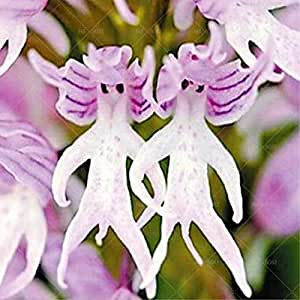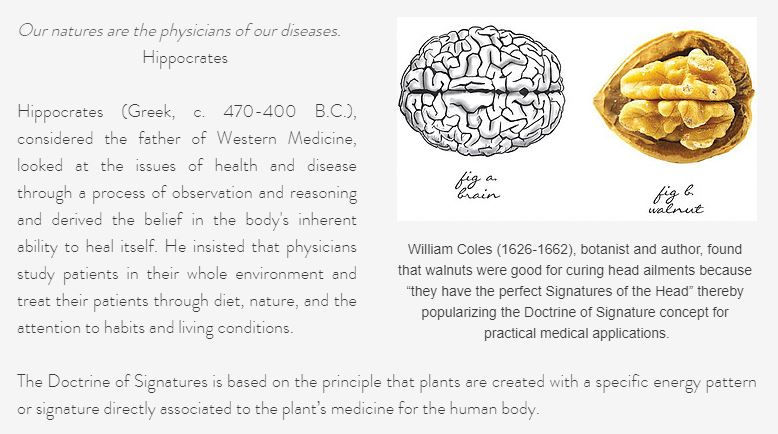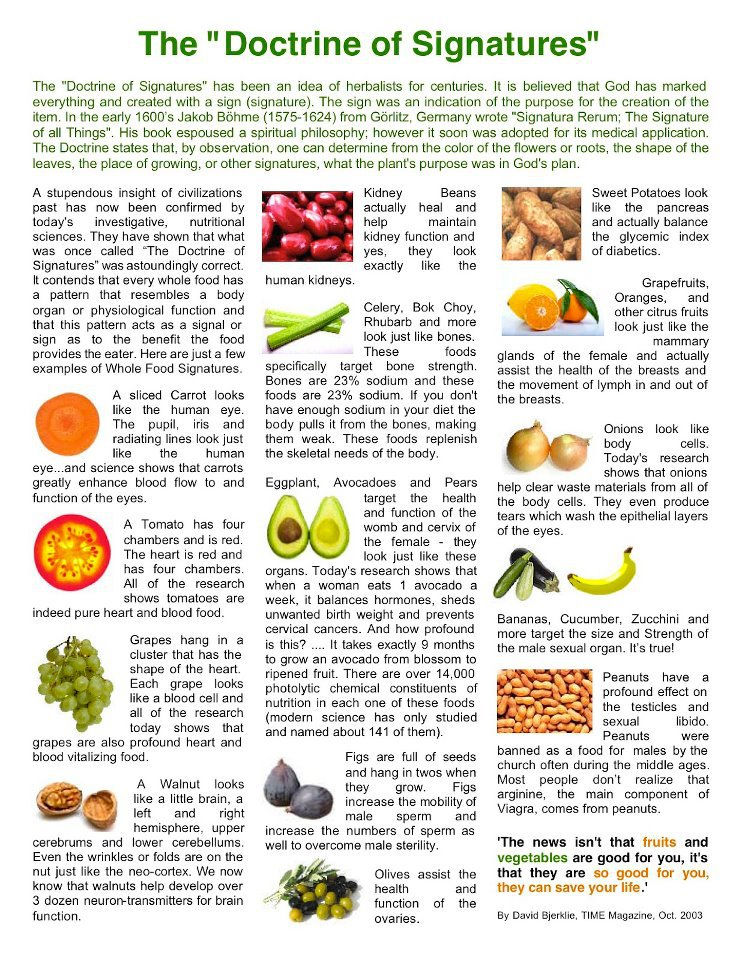The Doctrine of Signatures
- fleurishliving

- Jul 18, 2022
- 4 min read

Plants have long been primary teachers for those who travel deep into the heart of the world, for those who seek the soul teaching that only the wild can bring.
Stephen Harrod Buhner, author of "The Secret Teachings of Plants: The Intelligence of the Heart in the Direct Perception of Nature"

Paracelus (Swiss, 1493-1541), physician, botanist, alchemist, and astrologer, is considered the father of toxicology. He sought to understand nature and believed in the natural healing of a magical world created by God. Many thought him to be a magician since some of his cures seemed miraculous; however, he firmly believed, "God does not want things to stay hidden, which He created for mankind's benefit and which he gave man as his property into his hand...As you can see, every herb has been brought into the shape that is akin to its inner nature [by God]."
In more recent times, Dr. Edward Bach, (British, 1886-1936), a prominent physician, believed that plants embodied the positive power to treat negative moods and emotions. He believed that negative moods and emotions were a message from one's Soul calling for a change in the way of living and mental outlook. Overtime, he developed what he called a "theory of types" by which he divided people into seven vibrational groups based on their reactions to illness - fear, uncertainty, loneliness, over sensitivity, lack of interest in present circumstances, despondency, and over-concern for others. He identified 38 plants from which he prepared essences or remedies infusing the energetic patterns of these plants, through sunlight, into water which could then be ingested in small amounts by his patients. Today, the manufacture and use of flower essences or remedies is widespread and encompasses a variety of plants beyond the original Bach 38 essences.
Plant Signatures and Energies
Roots (and rhizomes) anchor the plant into a substrate (e.g. the soil), absorb nutrients and water important for plants growth, and produce hormones. In herbal medicine, roots are collected in late autumn or early winter when the plants root energy is the most potent. Energy Pattern: Anchor/Ground, Calming, Cooling, Comfort, Confidence, Courage, Creativity, Digestion, Embodiment, Foundation, Generate, Movement, Nourish, Stimulating, Strength, Stability, Thrive.
Trunk/Stem is the center and strength of a plant and conducts water and nutrients to leaves and flowers. Energy Pattern: Conduct, Courage, Eternity, Fortitude, Growth and development, Immortality, Longevity, Nobility, Patience, Provide, Prosperity, Self Esteem, Spirituality, Strength, Wisdom.
Resinous substance helps to protect and heal the tree. Resins are most abundant during the summer months when they have a chance to flow due to the warmth of the sun. Energy Pattern: Drying, Forgive, Happiness, Heal, Incense, Meditate, Nourish, Nurture, Purify, Protect, Reflect, Relax, Sacred, Safety, Soothe, Spirit, Uplift, Warming.
Leaves (and needles) function within plants for photosynthesis, which is the process of using sunlight to synthesize foods from carbon dioxide and water. Photosynthesis in plants generally involves the green pigment chlorophyll and generates oxygen as a byproduct. Energy Pattern: Breathe/Breathing, Confidence, Create, Death and renewal, Empower, Energize, Expand, Fertility and growth, Optimism, Uplift, Transform, Vitality, Warming.
Flowers are in bloom from late winter throughout summer and attract pollinators to insure its own survival. Flowers have a strong affinity with the emotional realm and a strong feminine energy. Energy Pattern: Acceptance, Cooling, Compassion, Confidence, Forgive, Fragrant, Gratitude, Love, Nurture, Relax, Reproduce, Sensuality, Uplift.
Fruit is a seed-bearing structure that develops from the ovary of a flowering plant and is the means by which flowering plants disseminate seeds. Energy Pattern: Abundance, Cleanse, Creativity, Detox, Digest, Forgive, Hope, Nurture, Positivity, Protect, Release, Uplift.
Seeds are dormant through the winter months awaiting the arrival of warmth in early spring when they begin their cycle of growth. Seeds represent the beginning of life for a plant, its potential to become and to manifest. Energy Pattern: Creation/Creativity, Detox, Digestion, Drying, Endurance, Focus, Fortify, Growth, Invigoration, Manifest, Movement, Uplift, Reproduce, Release, Self Care, Self Discipline, Spicy, Vital, Warming.

Try This...Discover the Plant's Signature
Observe a plant.
Is there something about the plant that you do not understand (or dislike)? For example, you love the color but you don't like the thorns or you love the scent, but you don't like it shape.
Is there something about the plant that you find healing and which brings you in your natural balance? For example, the shape and color of the flower brings a sense of beauty, ease, and grace into your life?
Is there something about the plant that you did not expect to see or find? For example, the tendril that winds delicately around it keeping it secure and connected or a large heavy flower on a slender thin stem.
Julia Graves writes in "The Language of Plants" that we can think of the Doctrine of Signatures in a more imaginative, holistic way through an understanding that the plant is both the "teacher and giver" who can teach us what:
we do not understand
we do not know how to do by showing us the way to find our natural balance
by inspiring us to change our way of functioning to include ways in which we did not function before.
How does this plant make you feel? Include positive feelings as well as negative. Sense into your body and ask yourself where do you feel those feelings? Your head, heart, throat, belly? How do you sense this? What sensations occur in your body? Tingling, heat or cold, or a tightness, or anything else?
Take some time to discover the plant's "central theme and remedy". You can meditate with the plant or research this on the internet. For example, the Chrysanthemum's central theme is love and trust; other qualities include abundance, cheerfulness, compassion, optimism, and wealth and it is also associated with death and grieving. As a plant remedy it can be used to support a joyful and peaceful life in the present moment.
Another Way to Think About This
Did you know that the flower can mimic your own body language? Suzy Chiazzari, author of Flower Readings, says that “The way we sit and hold our heads is very similar to the way the plant grows and holds it flower. A plant which bends and shakes in the breeze suggests a nervous person, while a tall upright stem may indicate someone who finds it difficult to let go”.
So, if you are
· Feeling nervous, anxious, or unsure replace it with optimism, confidence, and mindfulness.
· Tightness or restriction replace it with some expansive, make a change.
· Competitive replace it with love, peace, and trust.
· Anger and impatience replace with joy and creativity.
------
Resources







Comments